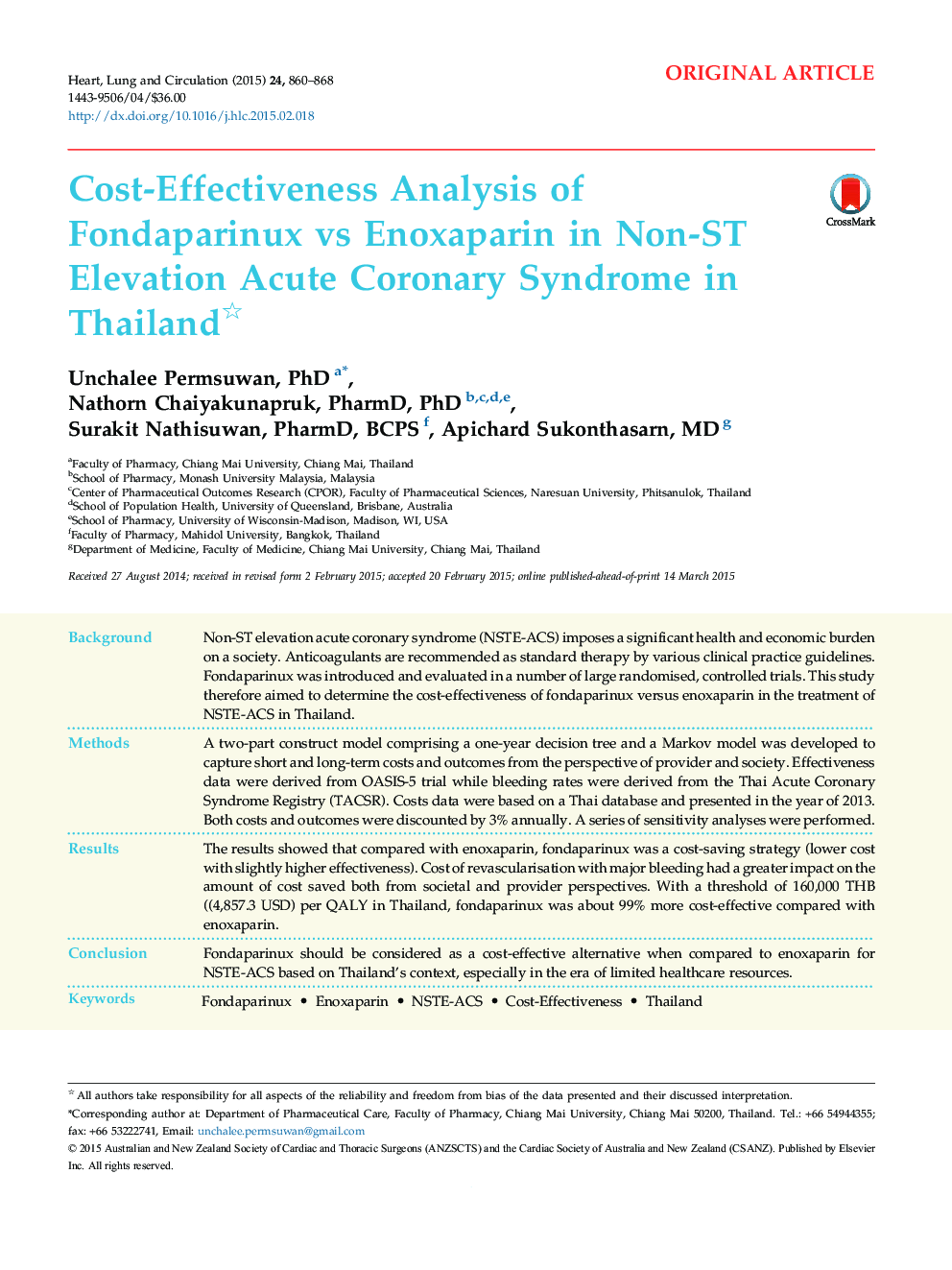| Article ID | Journal | Published Year | Pages | File Type |
|---|---|---|---|---|
| 2917819 | Heart, Lung and Circulation | 2015 | 9 Pages |
BackgroundNon-ST elevation acute coronary syndrome (NSTE-ACS) imposes a significant health and economic burden on a society. Anticoagulants are recommended as standard therapy by various clinical practice guidelines. Fondaparinux was introduced and evaluated in a number of large randomised, controlled trials. This study therefore aimed to determine the cost-effectiveness of fondaparinux versus enoxaparin in the treatment of NSTE-ACS in Thailand.MethodsA two-part construct model comprising a one-year decision tree and a Markov model was developed to capture short and long-term costs and outcomes from the perspective of provider and society. Effectiveness data were derived from OASIS-5 trial while bleeding rates were derived from the Thai Acute Coronary Syndrome Registry (TACSR). Costs data were based on a Thai database and presented in the year of 2013. Both costs and outcomes were discounted by 3% annually. A series of sensitivity analyses were performed.ResultsThe results showed that compared with enoxaparin, fondaparinux was a cost-saving strategy (lower cost with slightly higher effectiveness). Cost of revascularisation with major bleeding had a greater impact on the amount of cost saved both from societal and provider perspectives. With a threshold of 160,000 THB ((4,857.3 USD) per QALY in Thailand, fondaparinux was about 99% more cost-effective compared with enoxaparin.ConclusionFondaparinux should be considered as a cost-effective alternative when compared to enoxaparin for NSTE-ACS based on Thailand's context, especially in the era of limited healthcare resources.
